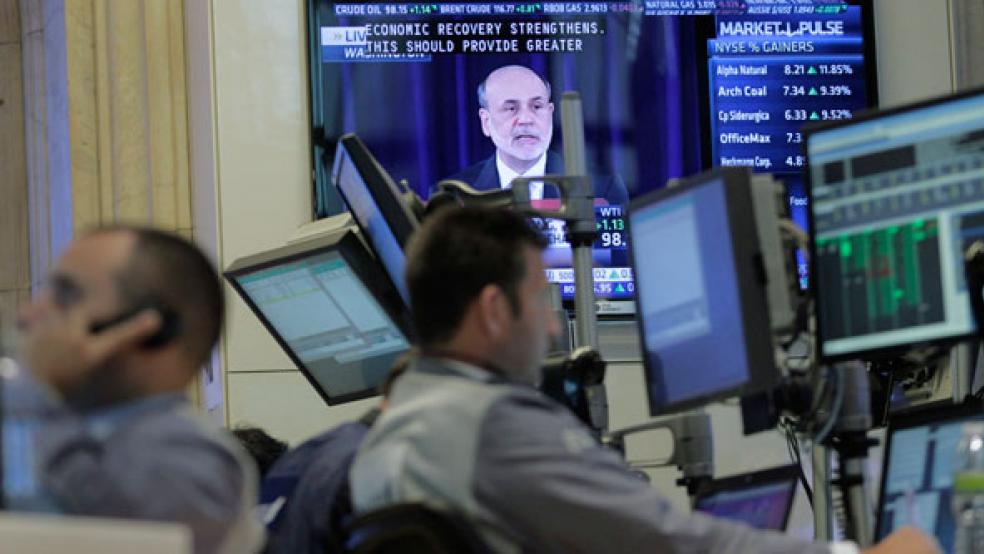A few Federal Reserve officials thought last month it would soon be time to slow the pace of their bond buying "somewhat" but others counseled patience, according to meeting minutes that offered little hint on when the U.S. central bank might reduce its purchases.
The minutes of the Fed's July 30-31 meeting, released on Wednesday, showed that almost all of the 12 members of the policy-making Federal Open Market Committee agreed changing the stimulus was not yet appropriate. Investors are anxiously waiting to see when the Fed will start to slow its $85 billion monthly asset purchases, with most predicting September as the beginning of the end of the quantitative easing program, known as QE3.
RELATED: FED WILL KEEP TRADERS ON RAZOR SHARP EDGE
The minutes provided few clues on the potential timing for a reduction but did little to dissuade people expecting a policy change next month.

"A few members emphasized the importance of being patient and evaluating additional information on the economy before deciding on any changes to the pace of asset purchases," the minutes said.
"At the same time, a few others pointed to the contingent plan that had been articulated on behalf of the committee the previous month, and suggested that it might soon be time to slow somewhat the pace of purchases as outlined in that plan."
After June's policy meeting, Fed Chairman Ben Bernanke told a news conference the central bank expected to start reducing its bond purchases later this year, with an eye toward halting them altogether by mid-2014.
U.S. stocks fell to session lows after the minutes were released while long-dated U.S. government bond yields rose. The dollar gained against the yen and euro. The Fed, which has taken unprecedented steps to help the slow U.S. economic recovery, wants to see sustainable economic growth and improvement in the labor market before it winds down the bond buying.
According to the minutes, policymakers noted that the U.S. unemployment rate - which stood at 7.4 percent last month - had declined "considerably" since the latest round of bond buying began in September. However, there were signs of "more modest" labor market improvement, such as the large number of Americans who had given up the hunt for work.
The Fed cut overnight interest rates to near zero in 2008 and has more than tripled its balance sheet to around $3.6 trillion through a series of bond purchases. Policymakers have pledged to keep rates near zero at least until the unemployment rate falls to 6.5 percent, provided inflation remains under control.
The minutes showed that several policymakers were willing to consider lowering that threshold if they determined that an even easier policy stance was needed. Still, a few worried changing the threshold could cause it to be viewed as a moveable goalpost, which could undermine its effectiveness. In the end, the Fed made no formal policy change after its July meeting, saying in a statement on July 31 that the U.S. economy continues to need support
This article by Jonathan Spicer and Steven C. Johnson originally appeared in Reuters.




